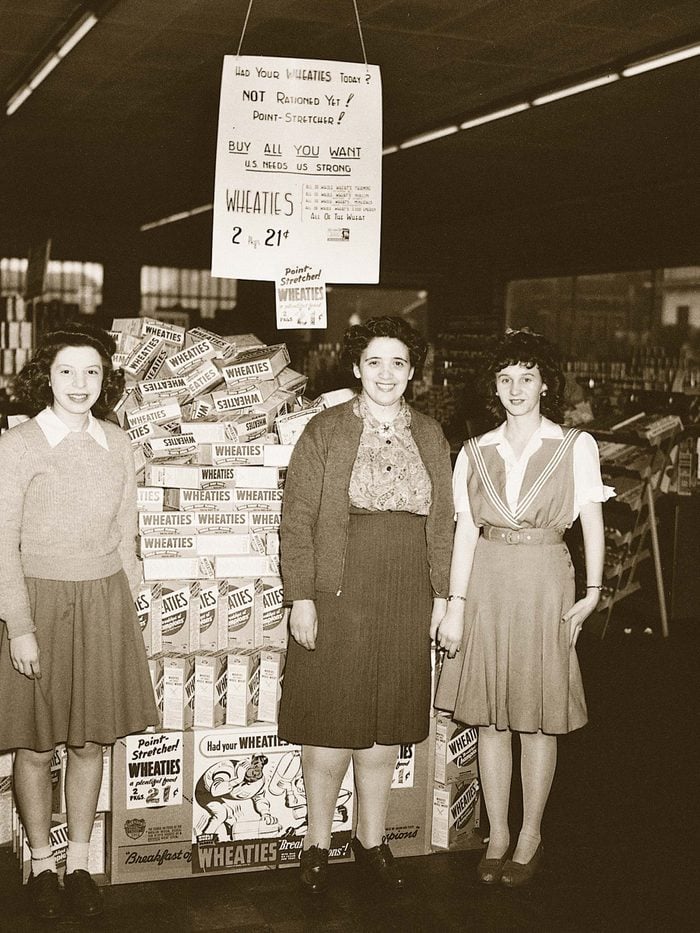
Breakfast of champions
“In the early 1940s, while in high school, I was a cashier at the Atlas Supermarket in Indianapolis, Indiana,” says Rosie Minatel Eagen (left) of Beech Grove, Indiana, “It was during World War II when lots of items were rationed, but not Wheaties. The woman in the center is Mr. Max Atlas, wife of the owner. The other girl is another cashier.”
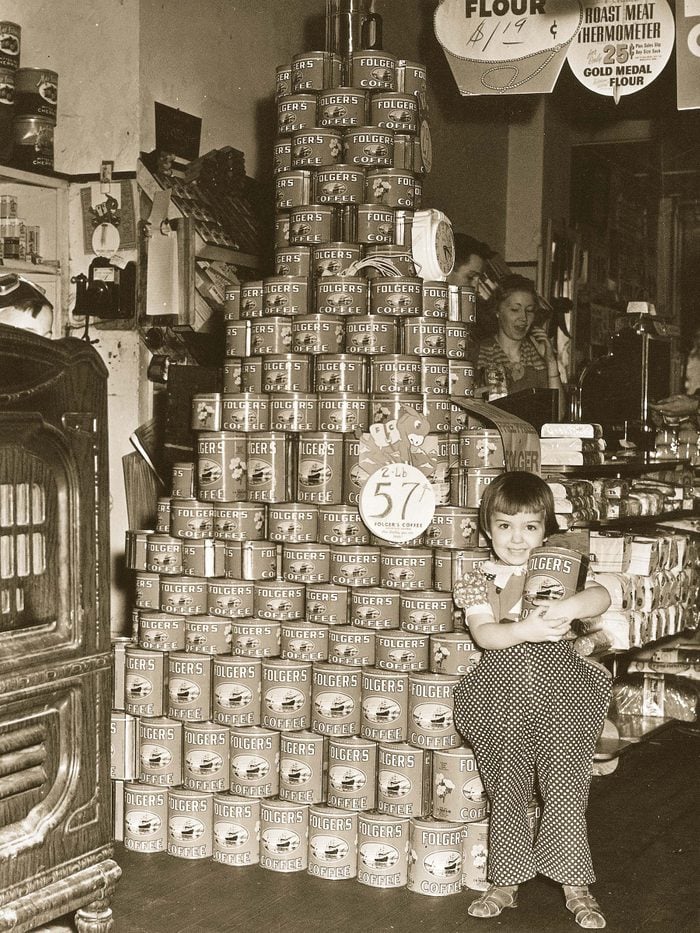
Coffee model
Mary Atha, of Battle Lake, Minnesota, was asked by a Folger’s Coffee salesman to pose with his display in a grocery store in Chariton, Iowa, in 1939. “The coffee was quite a bargain at two pounds for 57 cents. The store was a small neighbourhood grocery with a meat counter at the back. I remember my folks ran up a monthly tab, as most people did back then.” Things have changed since then considering today you don’t even have to leave home to rack up your grocery bill.
Want to save money? Here are some strategies from a financial expert.
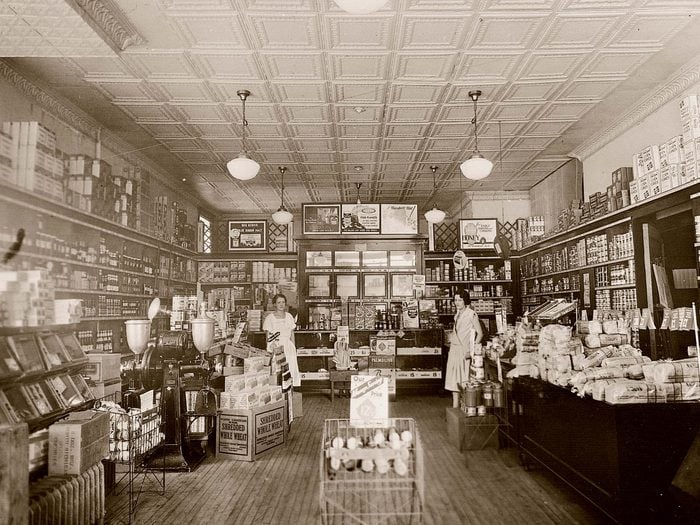
Times have changed
This photo, shared by Alvira Nelson of Frankfort, Illinois, shows a National Tea Co. store in Chicago in the 1930s. Compare it to a modern grocery store where one aisle probably equals the entire inventory of a 1930s store.
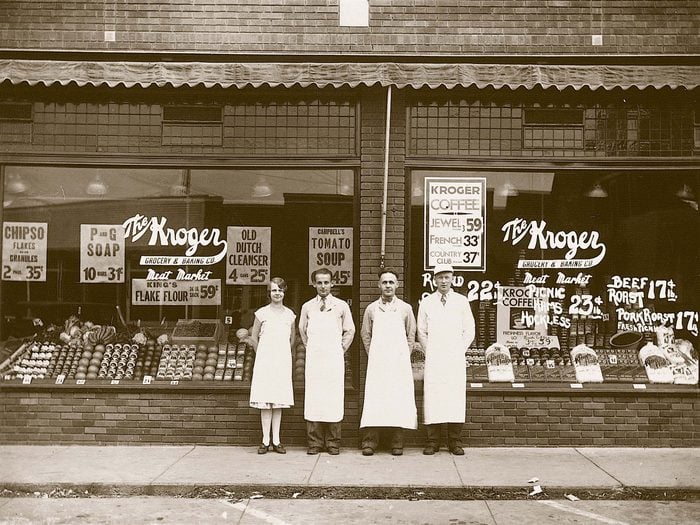
Saving for school
“I earned 35 cents an hour when I worked at this Kroger store in Holland, Michigan,” says John Schuiling of Grand Haven, Michigan. “This put me through Hope College, where I graduated in 1931. I’m second from the left in the 1930 photograph. I worked from 4 to 6:30 p.m. Monday through Friday and 14 hours on Saturdays. I also worked each lunch hour during high school and college so the manager could run errands.” Although grocery shopping has changed, here are 10 family-friendly foods you should always have on your grocery list.
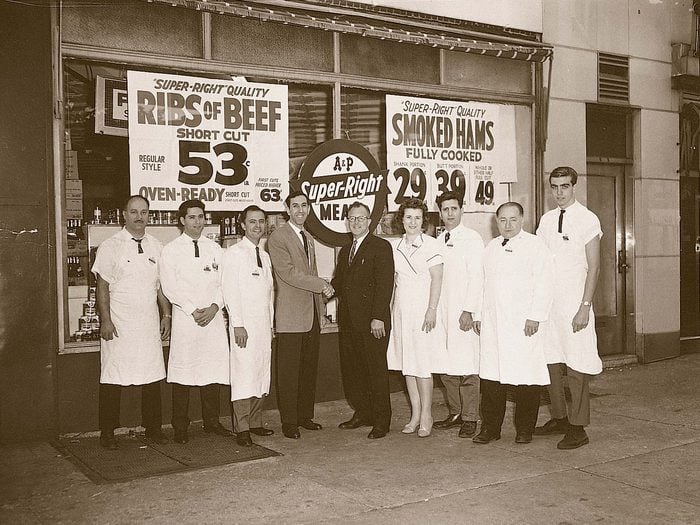
Stick-to-your-ribs prices
“That’s me (in the light-colored jacket) being congratulated upon winning a divisional contest within the A&P stores in 1963,” writes Peter Ferrara of Toms River, New Jersey. “My wife and I had dinner in New York, a night at the Waldorf-Astoria, and an 8-day trip to Bermuda. If you look at the window signs, you’ll see some good 1963 meat prices.”
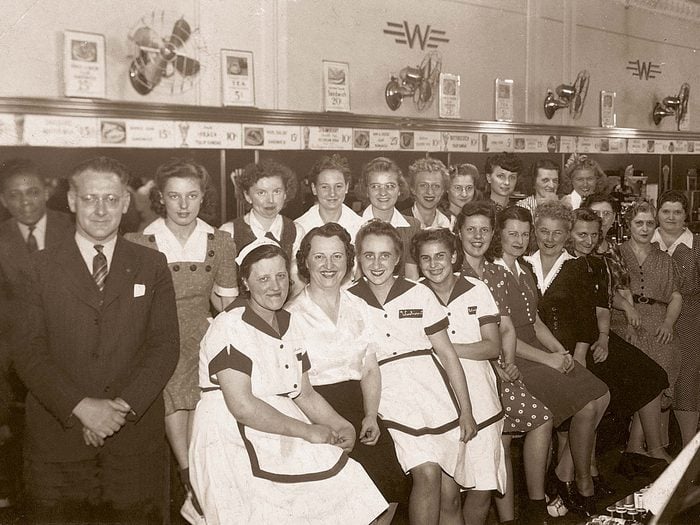
First job
“When I was 16, back in 1942, I got my first job—as a cashier at Woolworth’s store in Chicago,” says Eleanor Soukup Bara of Palos Hills, Illinois. “In the picture, I’m in the back row behind the manager’s left shoulder.”
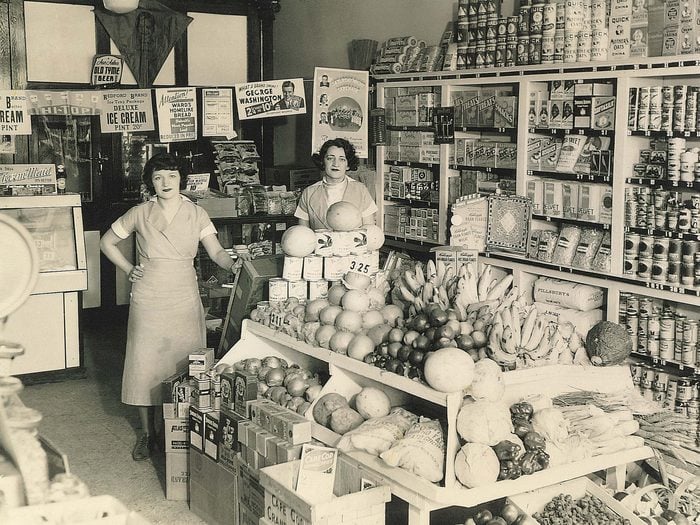
Starting over
“Borrowing $700 from her father around 1936, after going through a divorce, my mother opened a grocery store in the Rosedale Park neighbourhood of Detroit, Michigan. It was called the Rosedale Fenkell Market. That’s mom, above left, with her sister Olga Brunette. Mom got help from Olga, along with my younger brother, Nicky, and me, ages 10 and 12. With the four of us working, we built up the business, and the store did well in the affluent area,” says Anne Stanbrook of San Clement, California.
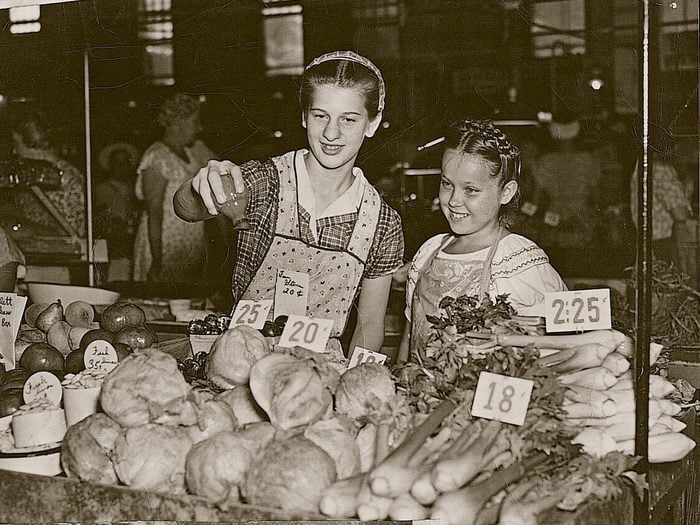
Fresh is best
“That’s my future wife, Priscilla, in 1947, sprinkling water on fruits and vegetables at a busy produce stand she’s tending with a young co-worker in York, Pennsylvania,” says Harold Martin of Lititz, Pennsylvania. “Prices like those aren’t often seen today!” Today, these are the healthiest (and unhealthiest) foods at Costco.
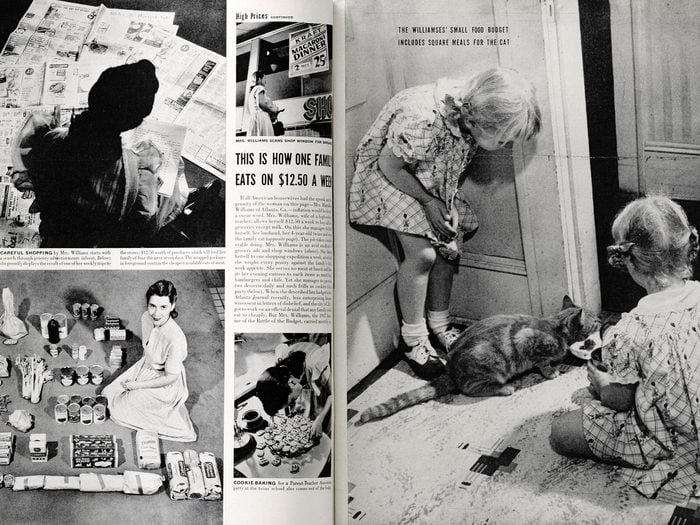
Coupon queen
“In the mid-1940s, Ann Cox Williams was the original extreme couponer. Through savvy shopping and adherence to a budget, the Atlanta housewife saved money and earned 15 minutes of fame in the process. After an Atlanta newspaper published a story about her, Life magazine ran a feature on Ann’s uncanny budgeting prowess in November 1947. She fed a family of four, plus a cat, on a mere $12.50 a week,” recalls her daughter Kappy Bowers of Lithonia, Georgia.
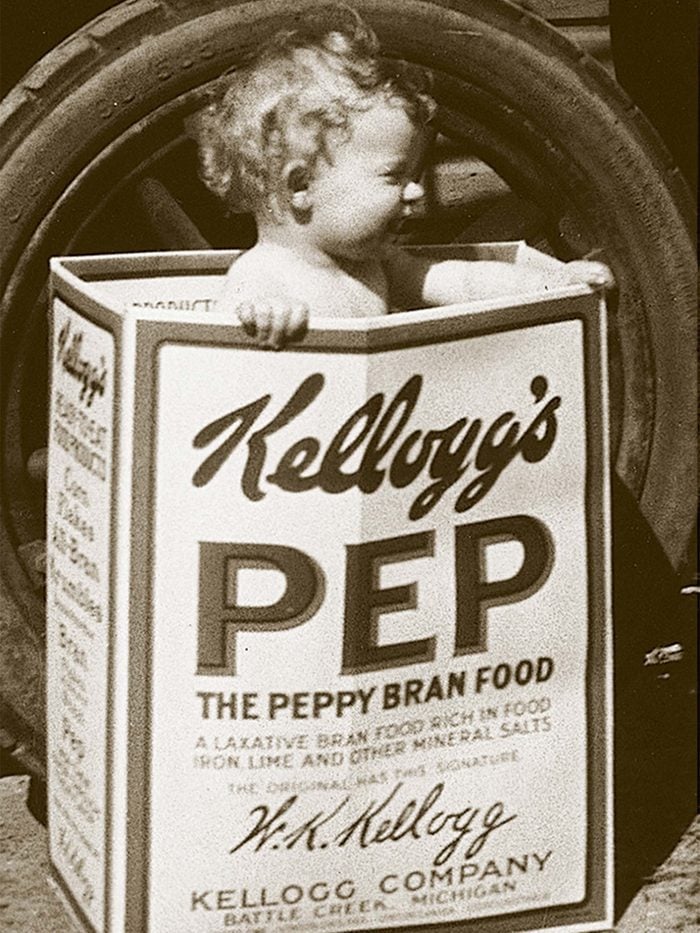
One peppy baby
Marcia Diez of Crystal River, Florida, was just a toddler when she climbed into this giant box of Pep cereal in 1924. Her father was a salesman who set up product displays in stores.
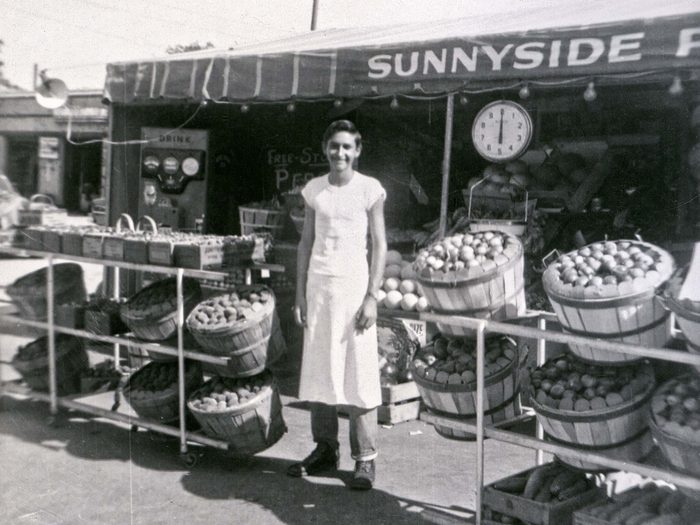
Pick a peck
“I was 15 when I got my first job in 1954 working at Sunnyside Farm Products in Affton, Missouri, near St. Louis. The farm stand’s owner, Ray Knierim, employed teenage clerks and paid them 50 cents an hour. We worked so many hours, I sometimes made as much as my mom, who worked at the local bank,” says Jim Eydmann of Granite City, Illinois.
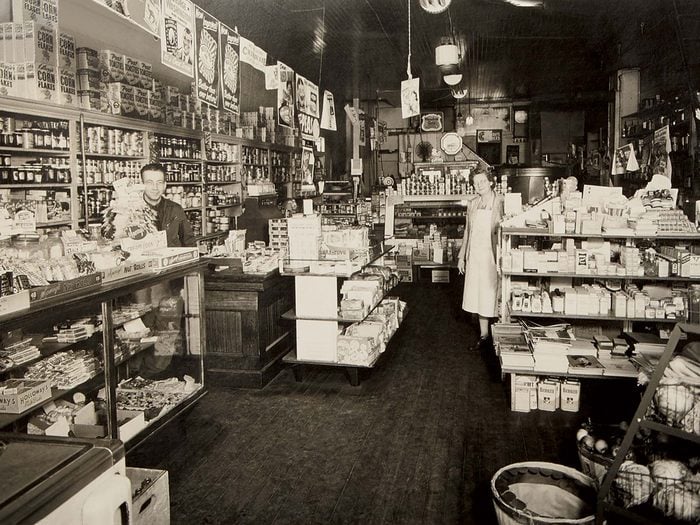
Step into the past
It’s 1950, and the Hastings are ready to serve you at their Arrowsmith, Illinois, grocery. “We sold everything,” writes former employee Dorothy Wagner. “Clothes, nails, meat, you name it.”
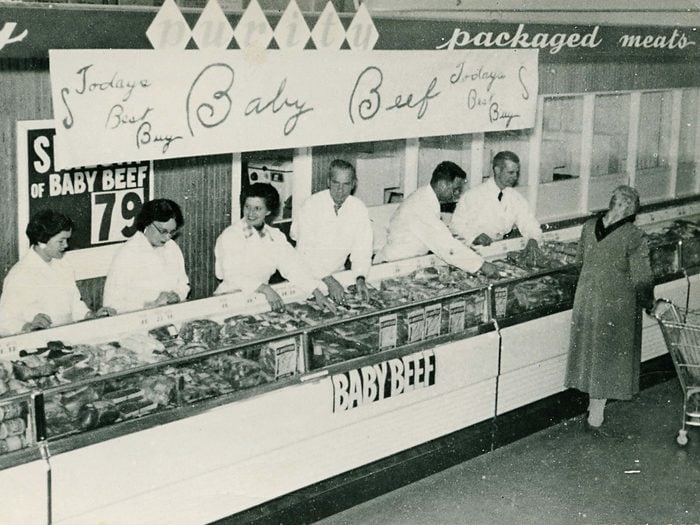
Self service
“In 1955, I got hired to wrap meat at Purity Market, the first self-serve meat market in Fort Bragg, California (that’s me, second from left). The manager hired the first three girls who showed up for an interview—and I was the first one in line,” says Doloris Wilbur of Orting, Washington.
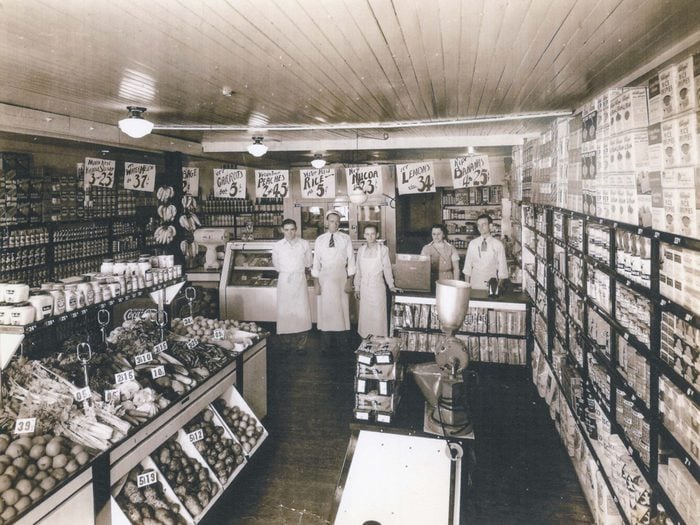
Chevy delivery
“My parents, Gladys and Charles E. Rhodes, owned this grocery store on Watts Hill in Charleston, West Virginia, in the mid-1930s. People would call in orders and a crew would deliver them in Chevy panel trucks,” says Charles Rhodes of Placerville, California.
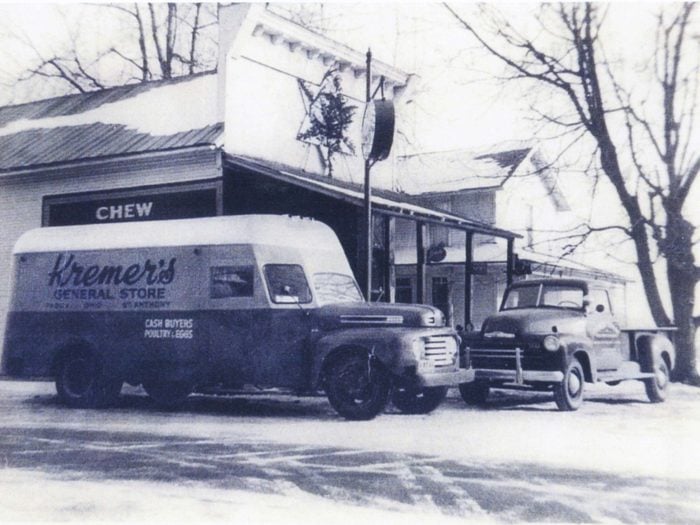
Door-to-door service
“For years, the grocery truck belonging to my father, Lawrence Kremer, was a welcome weekly visitor to area farms in northeast Ohio. Farmers could sell their eggs and poultry and buy needed goods, all without having to leave home,” says Tom Kremer of Fort Recovery, Ohio.
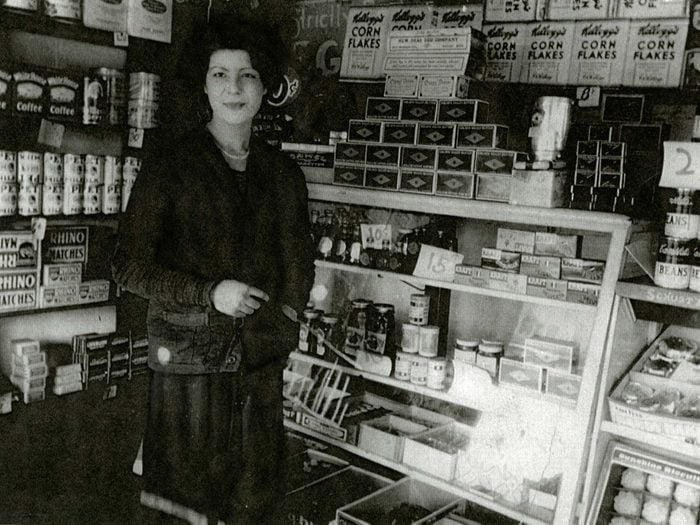
Home and work
Selma McClellan, of Lowell, Michigan, shared this photo of her mother working in a grocery store in Detroit. They lived in a room behind the store that rented for $15 a month in the 1930s. Selma says the six years that her family lived in the store were the happiest times of her life. That’s a neat deal on rent!
Now that you’ve learned all about what food shopping was like 100 years ago, next learn 14 shocking truths about grocery store produce.
